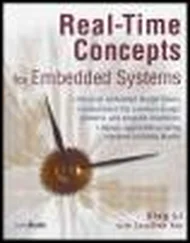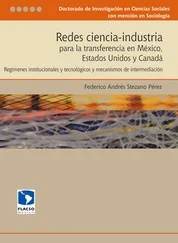1 ...7 8 9 11 12 13 ...24 Figure 23.3Topology of a Beijing converter.
Figure 23.4Back‐to‐back converter formed by a Beijing converter and a conversion leg.
Figure 23.5Back‐to‐back converter formed by a θ‐converter and a conversion leg.
Figure 23.6Operation of the energy bridge to black start the SYNDEM grid.
Figure 23.7Integration of the solar power node.
Figure 23.8Integration of the wind power node.
Figure 23.9Performance of the wind power node when the wind speed S wchanges.
Figure 23.10Integration of the DC‐load node.
Figure 23.11Integration of the AC‐load node.
Figure 23.12Operation of the whole testbed.
Figure 24.1The home field at the Texas Tech University Center at Junction, Texas.
Figure 24.2The home grid.
Figure 24.3Black‐start and grid‐forming capabilities.
Figure 24.4From islanded to grid‐tied operation.
Figure 24.5Seamless mode change when the public grid is lost and then recovered.
Figure 24.6Power sharing and regulation of the voltage and frequency of the home grid.
Figure 24.7The nonlinearity of the transformer.
Figure 24.8The nonlinearity of household loads.
Figure 24.9The large inrush current of the air conditioning unit.
Figure 25.1Panhandle wind power system.
Figure 25.2Connection of wind power generation system to grid.
Figure 25.3VSM controller for each wind turbine.
Figure 25.4Standard DQ controller for GSC.
Figure 25.5Simulated panhandle wind farms.
Figure 25.6Simulation results from a single unit.
Figure 25.7The voltage, frequency, active power and reactive power at 345 kV buses.
Figure 25.8Panhandle wind power system: the voltage, frequency, active power, and reactive power at the PCC of a single unit at the Wind Mill wind farm.
Table 1.1 Comparison of today's grid, smart grid, and next‐generation smart grid 9
Table 2.1 Machines that power the industrial revolutions.
Table 3.1The electrical‐mechanical analogy based on the force–current analogy.
Table 4.1Parameters of the synchronverter for simulations.
Table 4.2Parameters of VSG.
Table 4.3Parameters of VSG2.
Table 5.1Parameters of the rectifier under simulation.
Table 6.1Parameters of a PMSG wind turbine system.
Table 6.2GSC control parameters.
Table 6.3RSC control parameters.
Table 7.1Comparison of different control strategies for AC VSDs.
Table 7.2Parameters of the motor.
Table 8.1Operation modes of a self‐synchronised synchronverter.
Table 8.2Parameters used in simulations and experiments.
Table 8.3Impact on the complexity of the overall controller and the demand for the computational capability.
Table 9.1Parameters of the rectifier.
Table 9.2Parameters for controlling the DC‐bus voltage.
Table 9.3Parameters for controlling the the power.
Table 10.1Comparison of different wind power generation systems.
Table 10.2DFIG‐VSG parameters.
Table 10.3Parameters of the experimental DFIG system.
Table 11.1Operation modes of the PV inverter.
Table 11.2Parameters of the system.
Table 12.1Operation modes of a STATCOM.
Table 13.1Parameters of a synchronverter.
Table 14.1Parameters of the system under simulation.
Table 15.1Operation modes.
Table 15.2Parameters of the inverter.
Table 17.1Droop controllers for L‐, R‐, C‐, R L‐, and R C‐inverters.
Table 17.2Steady‐state performance of the three inverters in parallel operation.
Table 18.1Operation modes of the self‐synchronized universal droop controller.
Table 18.2Parameters of the inverter.
Table 18.3Parameters of the microgrid.
Table 19.1Parameters of the experimental droop‐controlled rectifier.
Table 20.1System and controller parameters.
Table 21.1Operation modes of the cybersync machine in Figure 21.7.
Table 21.2Parameters of the cybersync machine under simulation.
Table 21.3Parameters of the experimental cybersync machine.
Table 25.1Parameters of the back‐to‐back converters.
Table 25.2Installed wind capacity in the panhandle.
Table 25.3Parameters of 345 kV transmission lines.
Table 25.4Comparison of export capabilities under different control strategies.
When I first met and interviewed Qing‐Chang Zhong at the Illinois Institute of Technology in Chicago, I already knew a lot about the innovative synchronous converter technologies he'd invented to harmonize future power grids. Qing‐Chang's invention is a game changer for the grid. It is the sort of breakthrough – like the touch screen in smart phones – that helps to push an industry from one era to the next.
What I learned about that day, and on ensuing visits between our families, was Qing‐Chang's towering ambition, keen intelligence, and vision for humanity. He has intimate knowledge of the complexity of generating consistent and affordable power to the masses, and the necessity to get this invention into everyday use in time to save the planet.
This book is a comprehensive guide to Qing‐Chang's path‐breaking thinking and work over the last two decades for next‐generation smart grids. It explores the theoretical foundations of his skilled engineering and offers case studies of their application. The book offers a technical solution to implement the lateral power envisioned by futurist Jeremy Rifkin that underpins the Third Industrial Revolution.
Qing‐Chang's goal is to help develop an electrical supply and distribution network that gives more access to various supplies and loads with more influence in its management and operation and advance global energy freedom for billions of people with access to low‐cost clean energy.
Qing‐Chang envisions a near future of complete, 100% generation from distributed energy sources to achieve what he calls “synchronized and democratized (SYNDEM) smart grid.” This unifies and harmonizes distributed energy resources and loads with a common law of synchronization. As a result, his work is designed to promote local resiliency, avoid wide‐area blackouts, and secure the grid from terrorist attacks.
Qing‐Chang's SYNDEM grid architecture, in effect, is an essential tool for achieving one of the most technically challenging industrial transformations in history. The architecture eases stress on contemporary electric transmission grids as coal, nuclear, and gas‐fired centralized generating plants give way to thousands of decentralized and distributed renewable energy stations being installed offshore, in fields, and on ridges and rooftops all over the world. It does so by automatically sensing and instantly reacting to fluctuations in electricity production, demand, and voltage across the grid. That's a real trick for an electrical supply industry diversifying its generating sources so rapidly.
Читать дальше












